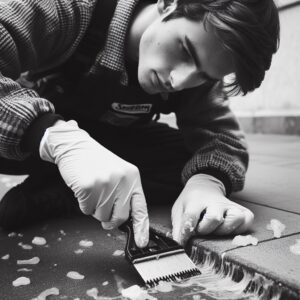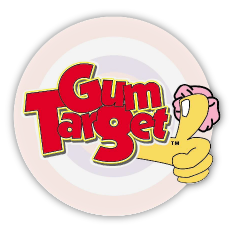Gum does not degrade over time. It clings to surfaces, accumulating dirt and pollutants, becoming a breeding ground for bacteria. The removal process is neither simple nor quick. It requires specific tools and, in most cases, a whole lot of elbow grease. The challenge is daunting, but community volunteers are tackling it with determination and creativity.
Mobilizing Community Action
The core group of volunteers may reach out through local community boards, social media platforms, and community meetings to share information about the problem of gum litter and its long-term effects. They create compelling content that highlights how each actions contribute to a larger impact. This outreach is necessary for building awareness and drawing in a larger pool of volunteers.
These volunteer groups often organize specific events or cleanup days, making it easy for community members to get involved. They provide the necessary tools and support to ensure that volunteers feel prepared and motivated. Publicizing these events through various channels helps to broaden their reach and attract a diverse group of participants.
Volunteers invest time in teaching community members about the environmental significance of their actions. This can include information sessions at local schools, community centers, or even online workshops. The goal is to prevent future littering through a change in public behavior.
One of the most effective strategies for mobilizing community action is partnering with local businesses, schools, and government entities. These partnerships can provide important resources, such as funding for supplies or access to public spaces for cleanup. When local authorities endorse these initiatives, it lends credibility and can encourage more individuals to participate.
Tools of the Trade
 One of the most commonly used tools in the battle against gum litter is the manual scraper. These scrapers are designed to lift gum off surfaces with minimal effort. They are especially useful for tackling smaller areas or spots where precision is required. The material of the scraper—typically metal or hard plastic—is chosen to ensure durability and efficacy in gum removal, without scratching or damaging the underlying surface.
One of the most commonly used tools in the battle against gum litter is the manual scraper. These scrapers are designed to lift gum off surfaces with minimal effort. They are especially useful for tackling smaller areas or spots where precision is required. The material of the scraper—typically metal or hard plastic—is chosen to ensure durability and efficacy in gum removal, without scratching or damaging the underlying surface.
Biodegradable cleaning solutions represent another component in the toolkit. These environmentally friendly liquids can be applied to gum spots to soften them, making the removal process easier and less time-consuming. The emphasis on biodegradability is necessary, as it aligns with the overall goal of minimizing environmental impact. These solutions often contain natural ingredients that break down the gum’s adhesive properties without harming the surrounding environment.
For more challenging situations, where manual scraping and liquid solutions might not suffice, volunteers turn to steam machines. These devices use high-temperature steam to dissolve gum quickly, allowing for its removal from surfaces without the need for harsh chemicals. Steam machines are highly efficient, reducing both the time and physical effort required to clean large areas. The use of water vapor makes this method environmentally friendly, as it avoids introducing additional pollutants into the ecosystem.
Brushes and cloths are used in conjunction with the previously mentioned tools to wipe away residue and clean the area post-removal. The selection of brushes and cloths is made with care, ensuring that they are tough enough to deal with sticky residues yet gentle enough not to mar the surfaces being cleaned.
Volunteers often wear gloves to protect their hands from both the cleaning solutions and the bacteria that gum can harbor. Depending on the location and extent of the cleanup effort, protective eyewear and masks might also be necessary to shield against potential splashes and fumes.
Success Stories
One notable success story comes from a coastal community where gum litter had tarnished the beauty of its famed boardwalk. Volunteers organized by a local environmental group embarked on a mission to restore the boardwalk to its former glory. Armed with the appropriate tools and fueled by a shared commitment to their town’s well-being, they removed thousands of gum spots. This group engaged in public education, spreading awareness about the consequences of gum litter. Their efforts fostered a sense of community pride and ownership, leading to a noticeable decrease in littering behavior.
Similarly inspiring is the tale of a group of high school students who recognized the negative impact gum litter was having on their school grounds. Motivated by a desire to create a cleaner, more welcoming environment for themselves and future students, they initiated after-school cleanup sessions. With support from school staff and local businesses that provided cleaning supplies, these students tackled gum litter on sidewalks and athletic courts. Their initiative set a powerful example of student-led action and responsibility.
Another story of success involves a city-wide gum litter removal day, which saw hundreds of volunteers from diverse backgrounds come together with a common goal. Supported by the city council and local businesses, this event acted as a platform for wider environmental education and community building. The visibility of this large-scale effort garnered media attention, further amplifying its message and encouraging ongoing civic engagement in cleanliness and environmental stewardship.
The Broader Impact
Clean and well-maintained public spaces are important for the well-being of community members. They promote a sense of pride and collective responsibility among community members. Cleaner spaces can lead to reduced stress levels and encourage outdoor activities, contributing to healthier lifestyles.
Through their actions and outreach efforts, volunteers involved in gum litter removal raise awareness about the consequences of littering and the importance of responsible waste disposal. This education helps foster a culture of environmental consciousness and can influence behavior change, reducing littering practices over the long term.
These community-driven efforts often garner support from local businesses and government entities, leading to stronger collaboration and partnerships within the community. Such cooperation can facilitate the allocation of resources for broader environmental conservation projects, thereby amplifying the impact of initial gum removal efforts.
For those inspired by these local heroes and interested in contributing to the cause, getting involved is simpler than one might think. Start by reaching out to existing groups in your community or, if none exists, consider starting your own. Engage local businesses, schools, and city officials to support your efforts. Every piece of gum removed is a victory in the larger battle against litter.



